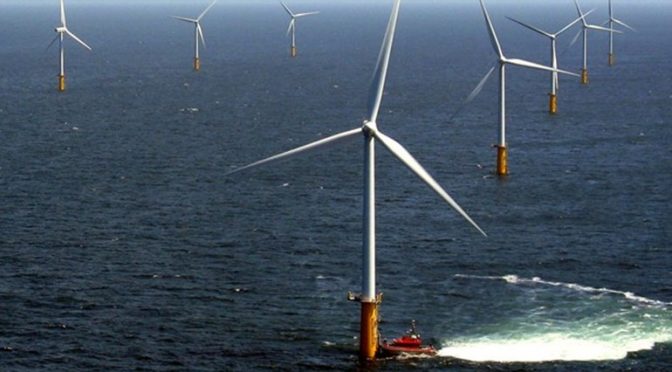The largest offshore wind energy conference in the Western Hemisphere successfully concluded this afternoon, bringing together over 1,000 leaders at International Partnering Forum (IPF), the Business Network for Offshore Wind’s annual conference. Held virtually this year, attendees from across the globe, including Europe, Canada, Mexico, China, and the U.S., heard messages from four state governors and 35 field-expert speakers who provided insights on time-sensitive developments, projects, and policies affecting the offshore wind industry.
The three-day event kicked-off Tuesday with CareerMatch Job Fair, the first ever national job fair, which drew over 300 job seekers to network with companies including Avangrid, BOEM, Dominion Energy, MHI Vestas, Siemens Gamesa, and more. The final two Livestream events featured Governors Gina Raimondo (RI), Janet Mills (ME), Phil Murphy (NJ), and Ralph Northam (VA). A CVOW panel moderated by Boston Globe’s Jon Chesto brought together key component and project managers from Dominion Energy, Ørsted, Siemens Gamesa Renewable Energy, and Jan De Nul.
“This year’s IPF made lemons into limoncello. The virtual format allowed us to deliver the latest industry updates and news while keeping the industry connected,” said Liz Burdock, President and CEO of the Business Network. “It was powerful to hear four governors and other government leaders reaffirm their steadfast support for the growth of U.S offshore wind.”
During the last two days of IPF, the more than 60 exhibitors took advantage of the video chat booth to engage with attendees, who also interacted with nearly 20 research presenters in the Poster Hall on topics from animal habitat mapping, subsea power transmission cables with autonomous underwater vehicles, to new industry solutions on mass produce wind jackets.
The 2020 IPF successfully transitioned to a summer Livestream Series in April, hosting a total of seven half-day events focused on the breaking industry news – often having key figures on immediately following an announcement- as well as the latest developments, reports, and projects in the offshore wind industry. High level, special guests briefed attendees on topics ranging from the first Jones Act guidance released in nine years, details on the New York and New Jersey solicitation announcements, the first-ever U.S. SOV, Vineyard SEIS, On Point Interviews with industry CEOs and leaders, details on how the new White House announcement restricting new work visas effects the industry, and Developer Town Halls with Dominion Energy, Vineyard Wind, Atlantic Shores and more. Speakers during Wednesday and Thursday’s Livestream: Jobs & Workforce and Livestream: Future of U.S. Offshore Wind addressed challenges and opportunities that the U.S. industry must tackle to drive the industry to the next level.
A few key takeaways include:
Getting a Contract. Matt Sellers, VP of Process Facilities at Kiewit provided advice and guidance to IPF attendees looking to obtain a secondary steel supplier contract, or any other subcontract for that matter. He encouraged companies to not be afraid to define terms and vernacular with respect to components, and to delineate what pieces of a contract could or would be delegated to subcontractors. Talking and investigating is key.
Training the Future OSW Workforce. “You can’t be what you can’t see” is a motto used by Laura Hastings, Deputy Program Manager for the Rhode Island Department of Labor and Training and its one Rhode Island has applied to equitably building the next generation of the OSW workforce in its state. Rhode Island is using the Block Island Wind Farm as tool to expose job seekers to the opportunities in the offshore wind industry.
Regional Transmission Integration Vital to Growth. Transmission planners are preparing for the test of offshore wind transmission integration. Leaders from MassCEC, NYSERDA, PJM, and the New Jersey BPU laid out the work that is being done to plan for large scale offshore transmission integration in their respective regional transmission operation areas. A lot of cooperation is going into solving this grid integration problem and this work will inform some major decisions that will transform our electrical grid.
Necessary to Sync Entire Value Chain. In his On Point interview, MHI Vestas CEO Phillippe Kavafyan, noted that as the company continues to push offshore wind turbine technology forward (and bigger), it is important for the entire value chain to sync in order to reduce the cost of energy. “It is important when we got to the next generation of turbine that we ensure the technology isn’t inducing a fallback in efficiency and cost effectiveness of logistics, installation time, and balance as we bring new technology.” Adding that it takes time and collaboration to ensure effectiveness and efficiency.
“When the world economy shuttered in March, the industry wondered if governments would pause commitments to divert resources from offshore wind. The answer was a resounding no,” added Burdock. “States in the U.S. have committed to more than 29 GWs of offshore wind. Virginia’s Governor Northam signed legislation that included a 5200 MW commitment of offshore wind. New York and New Jersey released second round offshore wind solicitations totaling 5,000 MWs of power and the U.S. entered the floating offshore wind race when Diamond Offshore Wind and RWE Renewables invested $100M in the University of Maine Aqua Ventus floating offshore wind demonstration project earlier this month.”


